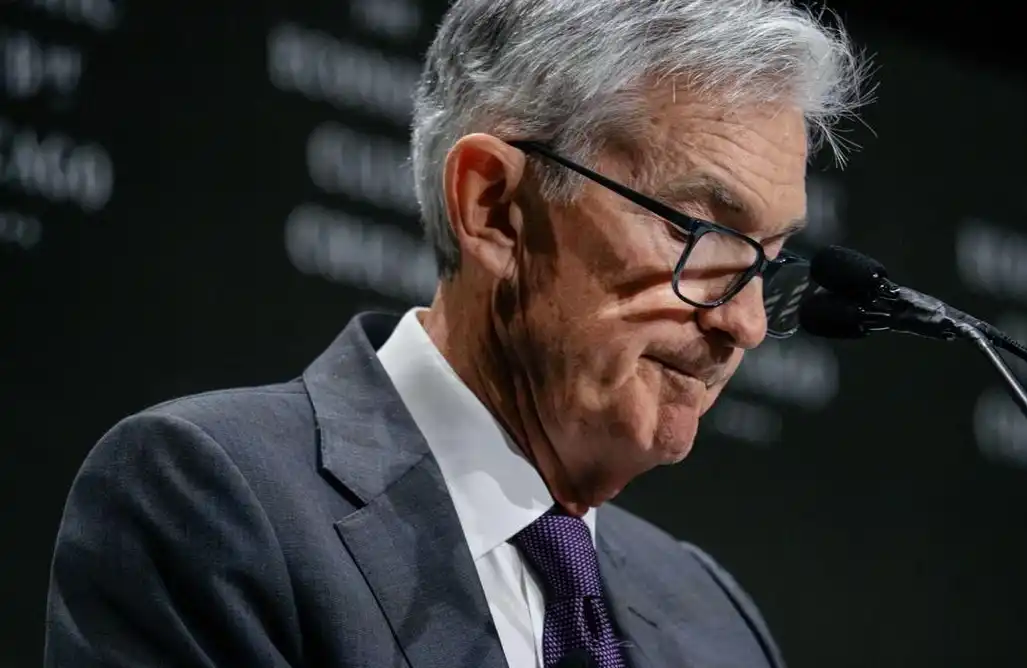The Satoshi Statue Gets Thrown into a Lake: Is Lugano's "European Crypto Dream" Still Alive?
Original Article Title: "Satoshi Nakamoto Statue Sinks to the Bottom of the Lake, Anxiety in the 'Crypto Valley' Comes to the Surface"
Original Article Author: David, Deep Tide TechFlow
On the morning of August 3, in Lugano, Switzerland, municipal workers retrieved several stainless steel fragments from the lake.
Only hours earlier, these fragments were part of a complete Satoshi Nakamoto statue. A city's tribute to the creator of Bitcoin has now become scrap metal at the bottom of the lake.
Twitter user @Grittoshi was the first to notice the statue was missing. He recalled that on the evening of August 1, Swiss National Day, the statue was still standing in Parco Ciani Park. Nearby at an outdoor café, young people were toasting.
Several hours later, this artwork, which took 21 months to design and was said to "disappear" when viewed from the front, had truly disappeared—in an unexpected way.

The Satoshigallery, an art group dedicated to erecting Satoshi Nakamoto statues in 21 cities worldwide, quickly offered a 0.1 BTC reward on social media to find clues.
However, the investigation process turned out to be surprisingly simple.
It was still @Grittoshi, a netizen, who used "Occam's Razor" to reason: revelers on National Day, after partying, may have impulsively decided to "have some fun." They couldn't have taken the statue too far, most likely just tossing it into the nearby lake.
Several hours later, his speculation proved to be correct—the municipal workers indeed retrieved the shattered Satoshi Nakamoto from the lakebed.
No one was caught, and perhaps never will be. Locally, this is likely seen as a prank by a group of intoxicated youngsters.
The statue was only fixed to its base by two welding points, easily broken by a few people working together. In a sense, this is more disheartening than premeditated destruction: to the vandals, this valuable statue was just a drunken pastime.
The statue did shatter. Satoshigallery posted on Twitter: "You can steal our symbol, but you can never steal our spirit."
Satoshi Nakamoto is indeed the soul of the entire crypto industry, but not necessarily of Lugano, Switzerland.
Behind the grandiose declaration, just last October, this statue was unveiled at Lugano's most important blockchain event, with the mayor personally endorsing it as a manifestation of the city's digital innovation spirit.
In less than a year, it was thrown into the lake by citizens.
As the Lugano city government ambitiously vowed to become the "European Crypto Valley," in Switzerland, the world's most crypto-friendly country, there may be a deeper gap between official enthusiasm and public sentiment than the waters of Lake Lugano.
The statue can be salvaged, but what about trust?
Lugano Plan B: A Crypto Hub Bought with Money?
In March 2022, when Bitcoin was still hovering around $40,000, Lugano Mayor Michele Foletti stood in the spotlight and announced an ambitious plan. Standing next to him was Tether's Chief Technology Officer, Paolo Ardoino.
The "Plan B" plan they jointly announced aimed to turn this Swiss southern small town of just 60,000 people into the "crypto capital of Europe."

Plan B, as the name implies, is a backup plan. When the traditional financial system fails, cryptocurrency is that Plan B. But for Lugano, this name has another layer of meaning—when other Swiss cities are already far ahead on the crypto track, it needs a Plan B for overtaking in the bend.
Two years have passed, and the report card looks quite impressive:
According to data released by Tether, the October 2024 Plan B Forum set a record, attracting over 2,500 global attendees. During the week of the forum, Lugano recorded 6,121 cryptocurrency transactions.
Nearly 100 businesses in the city accept Bitcoin and USDT payments, and 300 accept the city's LVGA token. Even the Lugano football club's jerseys are adorned with the Bitcoin logo.
But looking closely at these numbers, the narrative shifts:
What was the total amount of the 6,121 transactions? $160,000. So, an average of $26 per transaction. These numbers are still too low.
"We chose to put the Bitcoin logo on the jerseys instead of Tether for educational purposes," Ardoino said in an interview. But local merchants privately complain that most customers still prefer credit cards or cash. Accepting crypto payments seems more like a response to the city government's requirements rather than commercial demand.
Even more subtle is Lugano's relationship with Tether. The world's largest stablecoin issuer is not only Plan B's main sponsor but also deeply involved in the city's digital transformation.
The question is, is it really wise to bet the city's crypto future on a commercial company? Especially when this company itself is controversial — Tether's reserve transparency issue is still the Sword of Damocles in the crypto world.
The incident of throwing the Satoshi statue into the lake seems to have become some kind of prophecy.
This allegedly expensive artwork, designed for visual effect — to "disappear" from a specific angle — overlooked the most basic security consideration, being secured with just two welding points.
Is this kind of prioritizing form over substance also a microcosm of the entire Plan B?
While the industry naturally grew an ecosystem over the years, Lugano chose a shortcut: paving the way with money and building hype through marketing. But just like that statue sunk at the bottom of the lake, without the societal groundwork for technological transplantation, it might ultimately be nothing more than an expensive ornament.
Swiss Crypto Map, Lugano's Displaced Competition
If the Swiss crypto map is likened to a marathon, Lugano is undoubtedly the runner who started late but ran the hardest.
Zug, this small city with only 30,000 inhabitants, started its crypto journey as early as 2013. When entrepreneur Johann Gevers moved his company Monetas here, the "Crypto Valley" was still just a borrowed Silicon Valley's utopian vision. But by 2024, Zug had already attracted 719 blockchain companies, accounting for 41% of all of Switzerland.
More importantly, this is where Ethereum was born — if Bitcoin is the Adam of the crypto world, Ethereum is the Eve.
Numbers may be cold, but they tell distinctly different development paths. In Zug, 47% of the blockchain companies in the financial services sector and 43% of those in infrastructure chose to settle here. This was not the result of government planning but rather a natural market selection. Low tax rates, lenient regulations, and most crucially — an organically grown entrepreneurial ecosystem.
People working in blockchain companies in Zug are likely to live in the same community, have children attending the same school, and spend weekends discussing technical issues in the same bar.
In contrast, the Ticino canton where Lugano is located has only a total of 103 blockchain companies, but Lugano refuses to play a supporting role.
When Plan B was launched in 2022, their strategy was clear: since they couldn't replicate Zug's first-mover advantage, they chose a different path. Zug is an engineer's paradise, Geneva is a compliance expert's arena, Zurich is the center of fintech, so what does Lugano aim to become?
The answer is a playground for consumer applications.
Lugano opted for a seemingly more enticing road: getting ordinary people to use cryptocurrency. However, two years after Plan B was launched, most merchants accepting Bitcoin payments seemed to be more in for the show than being truly demand-driven.

A McDonald's in Lugano accepting Bitcoin payments
Image Source: PlanB.lugano
Even more awkward is the internal competition between Swiss cities. In 2023, Zug announced an increase in the limit for tax payments in cryptocurrency from 100,000 Swiss francs to 1.5 million Swiss francs—this is a real-use case; that same year, Lugano followed suit by issuing a 100 million Swiss franc blockchain bond. Yet, while this seems innovative, what sets it apart for the common citizen from traditional bonds?
Lugano seems to want to condense Zug's ten-year journey into two years.
But the crypto ecosystem is not about erecting statues and calling it a day. It needs time to ferment, failed projects to act as fertilizers, and real engagement from the local community.
Throwing the Satoshi statue into the lake was perhaps not because people in Lugano despise Bitcoin but because they simply don't care.
Promoting a crypto agenda forcefully in a city lacking the crypto genes is like trying to grow rice in the desert—not impossible, just too costly and against the laws of nature.
Statue Metaphor
The night the Satoshi statue spent at the bottom of the lake may have been the most ironically symbolic moment of its existence. This piece of art designed to "pay homage to the spirit of decentralization" ultimately required centralized municipal power to salvage it.
While Lugano officials talk about the blockchain revolution, citizens have their own life priorities.
The intoxicated youths who tossed the statue into the lake on Swiss National Day are most likely not crypto opponents. They vandalized the statue, more probably because it was just there—a thing that seemed like a fun target.
This kind of indifference is even more frightening than cryptocurrency hatred. Hatred at least implies caring, while indifference implies "not caring".
At a deeper level, the issue lies in the development model of "embracing crypto." Zug's success comes from a decade of organic growth, building an ecosystem together with entrepreneurs, investors, and tech geeks; while Lugano is attempting to replicate this process in two years through top-down administrative push.
It's a bit like trying to achieve the taste of a slow-cooked stew over a campfire using a microwave—it may look done, but the flavor isn't right.
When there is a change in government, when budgets are tight, when the next policy hotspot emerges, will the crypto-friendly Plan B still be a priority?
A statue can be rewelded, even strengthened to be as good as new, but once a crack in trust appears, repairing it is much more difficult than imagined.
The young person who threw Satoshi Nakamoto into the lake is not a bad person, but in a city that is "indifferent" to cryptocurrency, forcefully pushing a crypto agenda may not yield optimistic results.
Welcome to join the official BlockBeats community:
Telegram Subscription Group: https://t.me/theblockbeats
Telegram Discussion Group: https://t.me/BlockBeats_App
Official Twitter Account: https://twitter.com/BlockBeatsAsia
 Forum
Forum

 Finance
Finance
 Specials
Specials
 On-chain Eco
On-chain Eco
 Entry
Entry
 Podcasts
Podcasts
 Activities
Activities
 OPRR
OPRR









